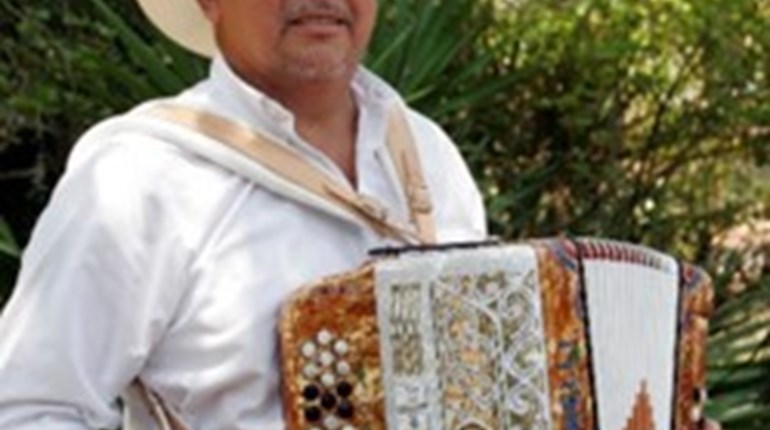Tomás Granado was born in Almont, Michigan, in 1955 to a family of Mexican migrant farm workers. As a child, his family relocated to Homestead, Florida, where they broke away from migrant farming work. At age 11, Granado received his first accordion, a red Hohner three-row button model. By age 16, he had formed his first “conjunto” (band) and was playing for local events and parties. Today, he is known as one of the best accordion players in the area. Granado plays in the norteño style, a beloved genre among Mexican-Americans. It developed at the Texas-Mexico border, combining German polka music with traditional Mexican ballads, though today it incorporates numerous Latin American influences. The style is noted for its emotionally charged lyrics, smooth vocal harmonizations and danceable rhythms.
Granado is also known for reestablishing the Mother’s Day serenatas tradition among Mexican Americans in Florida. He was one of the first musicians in the region to play serenatas for mothers from midnight until dawn on Mother’s Day, the traditional time for such performances. When demand grew too great, other local musicians began taking commissions for performances as well.
His band, La Fuerza del Norte, played all over Florida, including at the annual Florida Folk Festival. Between 1994 and 1996 he was instrumental in the Mexican American Music Survey, a research project led by folklorist Robert Stone with the purpose of documenting Mexican American musical traditions in Florida. Granado also owned a music store in Homestead, Florida, which catered specifically to Mexican-American music.
Granado relocated to Webster, Florida in 1998 and remains one of the few skilled accordion tuners and repair persons in the state. He maintains two shops, both named Granado Accordion, in Webster, Florida, and in Sinton, Texas. Granado continues to teach and play music and has served as a Master Artist in the Florida Department of State’s Folk Art Apprentice Program in 1992, 2010 and 2016. He received the Florida Folk Heritage Award in 2007.
